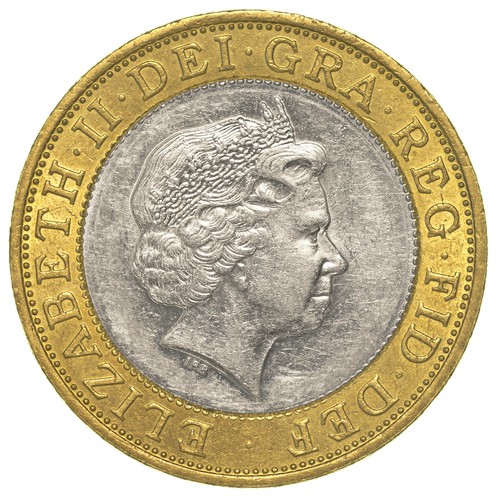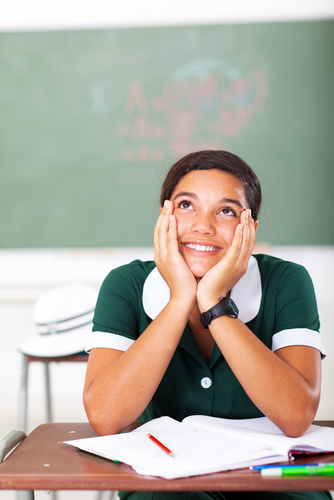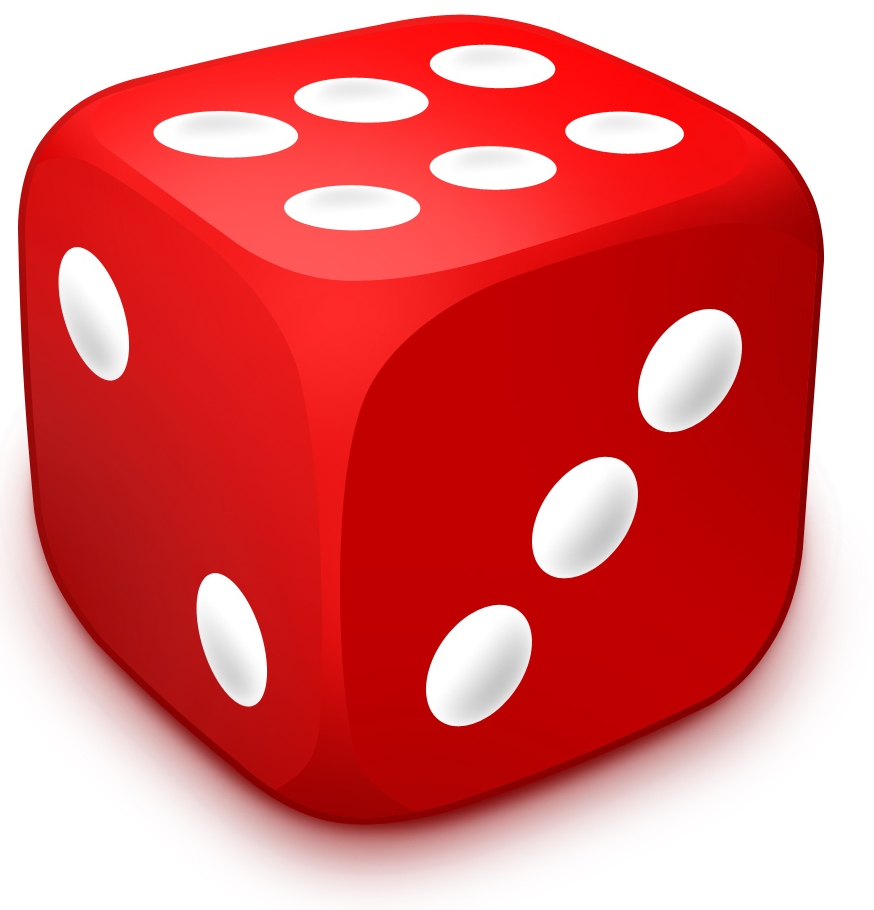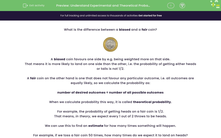What is the difference between a biased and a fair coin?

A biased coin favours one side by e.g. being weighted more on that side.
That means it is more likely to land on one side than the other, i.e. the probability of getting either heads or tails is not 1/2.
A fair coin on the other hand is one that does not favour any particular outcome, i.e. all outcomes are equally likely, so we calculate the probability as:
number of desired outcomes ÷ number of all possible outcomes
When we calculate probability this way, it is called theoretical probability.
For example, the probability of getting heads on a fair coin is 1/2.
That means, in theory, we expect every 1 out of 2 throws to be heads.
We can use this to find an estimate for how many times something will happen.
For example, if we toss a fair coin 50 times, how many times do we expect it to land on heads?
Well, we toss it 50 times and we expect every 1 out of 2 throws to be heads, so it should be half of 50, i.e. 25!
You can find the estimate for how many times something will happen (how many throws will land on heads) by multiplying the probability of it happening (1/2) by how many times we are performing the action (50)!
We can also use this concept to find probability!

Let's say we rolled a die 60 times and 3 times it landed on a 2.
Then the probability of getting a 2 on this die is:
3/60 = 1/20

Because we found this probability using an experiment, not theory, we call this experimental probability.
It can help us to decide whether this die is more likely to be fair or biased.
In theory, we expect the probability of getting a 2 on a fair die to be 1/6.
This is the theoretical probability.
But our experimental probability is 1/20!
That is nowhere near 1/6 so the die is probably biased.
Remember though - theoretical probability doesn't mean we will always get a 2 on a fair die perfect 1 out of 6 times (or even 10 out of 60 times)!
However, the more times we run an experiment, the more accurate the estimate becomes.
So for fair dice, the experimental probability would get closer and closer to the theoretical probability of 1/6 the more we perform the experiment!
Let's have a go at some questions!








